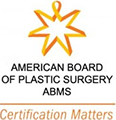Latest Trends in Breast Surgery
August 4, 2014
Atlanta plastic surgeon, Atlanta plastic surgery, body contouring, Cumming cosmetic surgery, Cumming plastic surgery, form stable implants, Rapid City cosmetic surgery, sagging breasts, silicone breast implants
Women today are opting for more subtle, natural looking options in all forms of cosmetic surgery, particularly when it comes to breast augmentation. In the past, large, round breast implants were common, but today, modestly-sized, shaped implants, which have more projection at the bottom and are tapered towards the top, have become increasing popular. While round implants have a tendency to make the breast appear fuller and can achieve more projection and cleavage, in some cases they can appear less natural and more artificial, particularly when sized too large to comfortably fit the patient’s frame. Shaped breast implants mimic the natural form and contour of the female breast, achieving results that are often indistinguishable from the real thing. Round implants are also easier to insert, since they are the same shape all over and so resist rotating out of place. Shaped implants, on the other hand, may shift within the “pocket” created for them during surgical implantation, making the breast appear distorted and unusual. To alleviate this concern, the most advanced shaped implants have a textured surface, allowing healing tissue to adhere to the implant and making accidental repositioning far less likely.
One of the most recent advances in breast augmentation is the introduction of what are known as “gummy bear implants.” These shaped and textured implants are filled with a more cohesive form of silicone with a thicker consistency than traditional silicone or saline. This makes them “form-stable”, which not only creates a firmer final result, but is also ideal in that the cohesive gel maintains its shape even in the case of accidental rupture.
Some women, specifically those who are generally happy with the size of their breasts but uncomfortable with the sagging that occurs with age, have shown a preference for breast lift, or mastopexy, procedures over augmentation with implants. In fact, according to statistics published by the American Society of Plastic surgeons, the number of breast lift procedures performed in the United States has increased by 70% since 2000, almost double the rate of increase in breast augmentations. A breast lift can reposition the breasts to a higher, more youthful position while making them appear more firm and lifted. Often, some of my patients opt to combine breast lift and breast augmentation to not only gain higher placement of the breasts on the chest, but also to make them fuller with implants.
If you’re interested in a breast procedure that I offer, please contact us today to schedule a consultation. Connect with me, Dr. Hunter Moyer, on Facebook, Twitter, and Google+ for the latest plastic surgery news.









